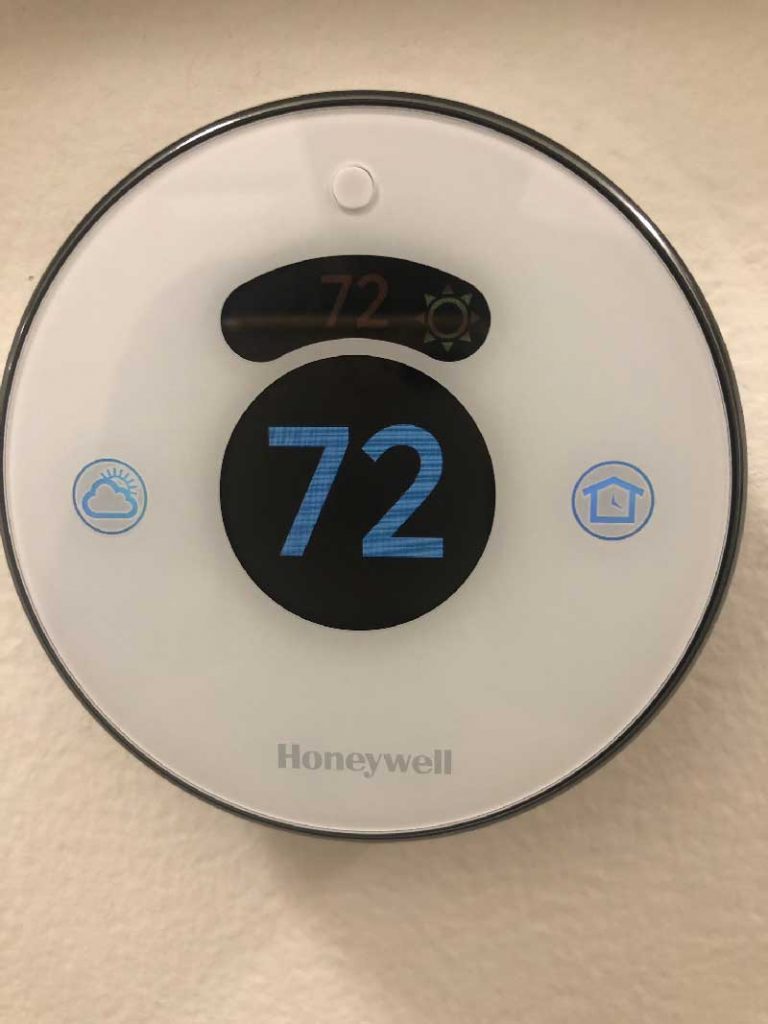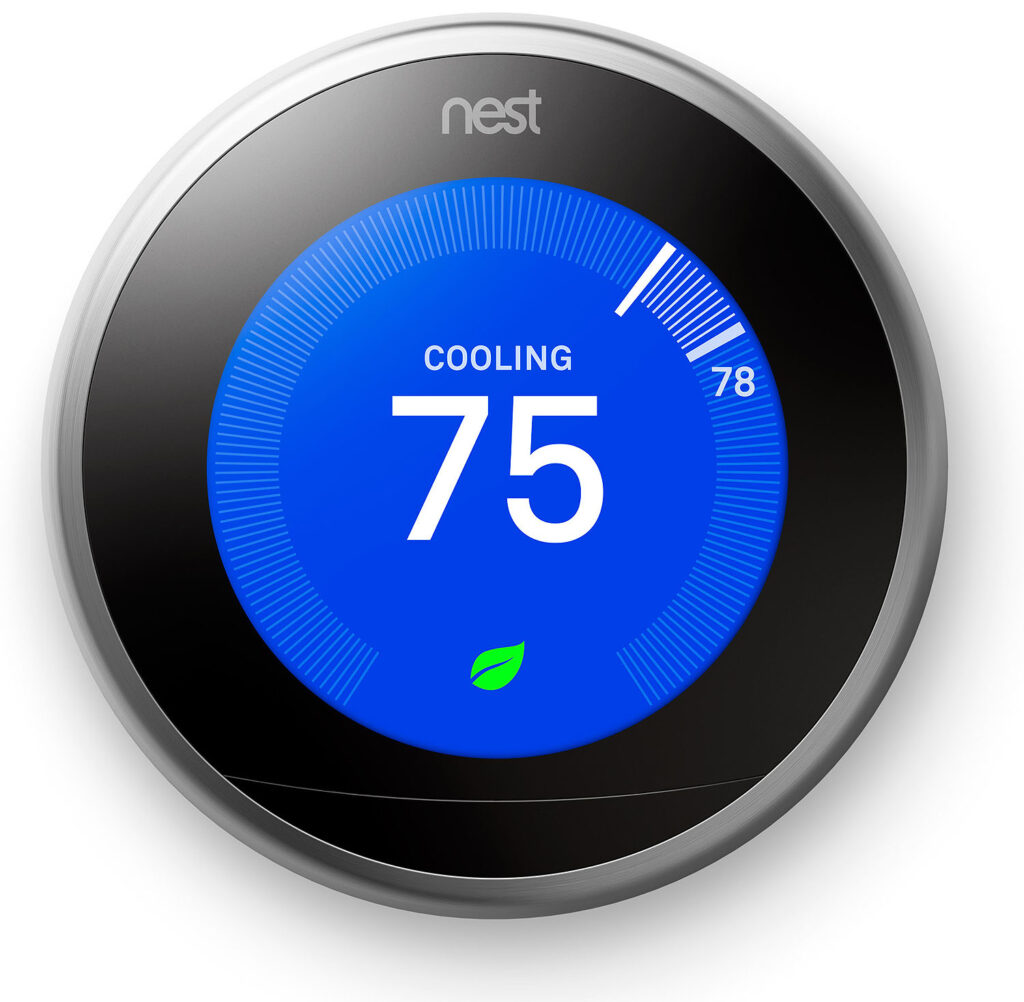A thermostat is a device that controls the temperature of a room or building by turning on or off the heating or cooling system. Thermostats are typically mounted on an interior wall and have a dial or digital display that allows you to set the desired temperature.
When the temperature in the room falls below the set point, the thermostat will turn on the heating or cooling system to bring the temperature back up. When the temperature reaches the set point, the thermostat will turn off the system.
Thermostats are an essential part of any heating and cooling system. They help to ensure that your home is comfortable and that you are not wasting energy.

There are two main types of thermostats: mechanical and digital. Mechanical thermostats use a bimetal strip to sense temperature. When the temperature in the room rises, the bimetal strip bends and turns on the heating or cooling system. When the temperature falls, the bimetal strip bends back and turns off the system.
Digital thermostats use a sensor to measure temperature. The sensor can be a thermistor, a thermocouple, or a digital sensor. When the temperature in the room rises, the sensor sends a signal to the control unit, which turns on the heating or cooling system. When the temperature falls, the sensor sends a signal to the control unit, which turns off the system.
Digital thermostats offer a number of advantages over mechanical thermostats. They are more accurate, they can be programmed to different temperatures at different times of day, and they can be controlled remotely.
When choosing a thermostat, it is important to consider the size of your home, the type of heating and cooling system you have, and your budget. You should also consider the features that are important to you, such as the ability to program the thermostat or the ability to control it remotely.
Here are some tips for using a thermostat:
- Set the thermostat to a comfortable temperature. The ideal temperature is between 68 and 72 degrees Fahrenheit.
- Program the thermostat to different temperatures at different times of the day. This will help you to save energy.
- Change the temperature of the thermostat when you are away from home. This will help to prevent your home from heating or cooling when you are not there.
- Clean the thermostat regularly. This will help to ensure that it is working properly.
Thermostats are an essential part of any heating and cooling system. By following these tips, you can use your thermostat to keep your home comfortable and save energy.

How a Thermostat Controls an HVAC System
An HVAC system is a heating, ventilation, and air conditioning system. It is responsible for providing comfortable temperatures in your home.
The thermostat is the brain of the HVAC system. It tells the system when to turn on and off the heating and cooling elements.
When the thermostat senses that the temperature in your home is below the set point, it will turn on the heating element. The heating element will warm the air in your home until the temperature reaches the set point.
When the thermostat senses that the temperature in your home is above the set point, it will turn on the cooling element. The cooling element will cool the air in your home until the temperature reaches the set point.
The thermostat will continue to turn on and off the heating and cooling elements as needed to keep the temperature in your home comfortable.
How to Program a Thermostat
Most thermostats can be programmed to different temperatures at different times of the day. This can help you to save energy.
To program a thermostat, follow these steps:
- Locate the thermostat’s programming button. It is usually located on the front of the thermostat.
- Press the programming button.
- Enter the desired temperature for each time of day.
- Save the programming by pressing the programming button again.
How to Control a Thermostat Remotely
Some thermostats can be controlled remotely. This can be helpful if you are away from home and want to adjust the temperature.
To control a thermostat remotely, you will need to use a thermostat that is compatible with a remote control. Once you have a compatible thermostat, you can use the remote control to adjust the temperature from anywhere in the world.
How to Troubleshoot a Thermostat
If your thermostat is not working properly, there are a few things you can do to troubleshoot the problem.
First, check the batteries in the thermostat. If the batteries are dead, the thermostat will not be able to turn on the heating and cooling elements.
Next, check the thermostat’s connections. If the connections are loose or damaged, the thermostat will not be able to communicate with the HVAC system.
If you are still having trouble with the thermostat, you may need to call a professional HVAC technician.
 E340 USA – Economy – HVAC – Energy – Health – Education
E340 USA – Economy – HVAC – Energy – Health – Education

